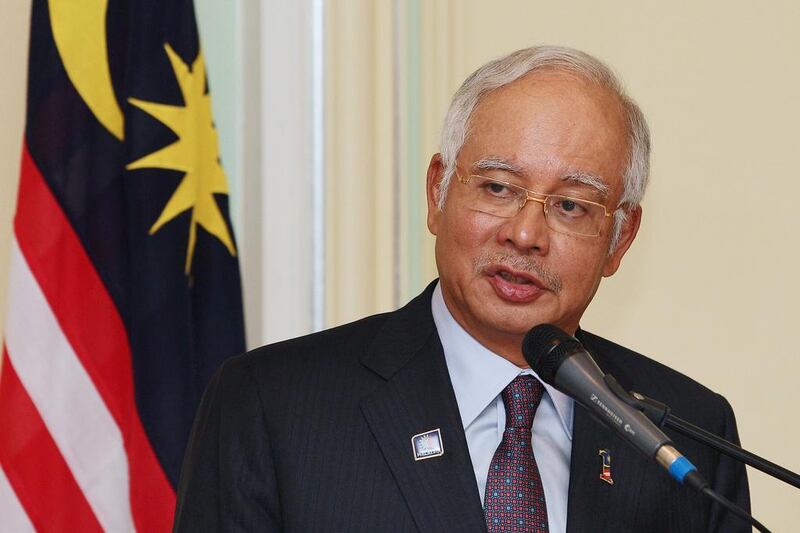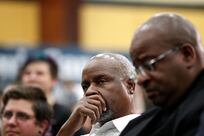If I were to write about a new power rising in the East, one whose population of 633 million is the third largest in the world after China and India, and 100 million more than either the European Union or the whole of North America, you might expect to have heard quite a lot about it.
It is on course to be the world’s fourth largest economy by 2050 at the latest; it is already the fourth largest exporting bloc. Its GDP – currently $2.5 trillion (Dh 9.1tn) – is predicted to reach $4 trillion by 2020. More than half the annual global tonnage of merchant shipping passes through its sea lanes. And with a growing middle class and a disproportionately youthful and increasingly educated population, it is perhaps no wonder that the Tokyo-based Diplomat magazine asked last week if it was “Asia’s hottest investment”. It went on to quote a PwC report, which stated that “the allure of [its] markets is obvious”.
So who, or what, is this potential new “third force”, as one of its leaders put it on Monday?
When I reveal that it is Asean, the Association of South-east Asian Nations, I am aware that this may be greeted with a slight sense of ridicule. Asean has grown slowly and incrementally during its 47 years. So much so that even the organisation’s most ardent proponents would admit that it has sometimes been hard to arouse huge enthusiasm for it. As an entity, it may be well known to the elite and business classes, but it would not be fair to say that they talk of little else in the paddy fields and estuaries of the region. Further afield, the acronym is not one that trips lightly off the tongue of many outside the groves of academia and policy studies.
But with the 26th Asean Summit having just drawn to a close in Kuala Lumpur, it would be appropriate to upgrade that assessment. The statistics and predictions at the start of this piece are enough to give weight to the words of Malaysia’s prime minister, Najib Tun Razak, whose country holds the association’s chairmanship this year. “This is Asean’s time right here, right now,” he said. “Let us work together,” he told fellow heads of government at the summit’s opening ceremony, “to ensure that the Asian century is also an Asean century”.
There is no reason why Asean should not become a “third force” alongside China and India in Asia, as Mr Najib put it. The Asean Economic Community meant to be created by the end of the year is supposed to achieve ever freer trade and harmonisation of standards and regulation, as well as an increased emphasis on “Asean centrality” that has the bloc acting more as one.
Asean’s past achievements have also, however, been long underestimated. Think back to the time it was founded in 1967. America was terrified about the “domino effect”: that one by one, the countries of east Asia would fall to communism. The region had experienced two decades of violence and insurgency after the Second World War and independence had mostly to be wrested forcefully from the departing colonial regimes. From 1963-66, Malaysia and Indonesia were locked in an undeclared war known as Konfrontasi (confrontation) with the latter’s president Sukarno vowing to “crush” his neighbour to the north.
Yet only a year after the end of that conflict, representatives of Thailand, Malaysia, Singapore, Indonesia and the Philippines managed to sign the Bangkok Declaration and pledge “to bind themselves together in friendship and cooperation … in order to strengthen the foundation for a prosperous and peaceful community of South-East Asian Nations.”
Keeping the peace, as Asean did, including ensuring that border disputes did not escalate, and stopping the communist contagion, were genuine accomplishments. They should not be overlooked.
Brunei joined Asean in 1984, followed by Vietnam in 1995, Laos and Myanmar in 1997, and Cambodia in 1999. Some criticised the admission of the last four, on the grounds that it meant putting the brakes on economic integration. But Asean showed itself to be wise in a way that the European Union did not. The EU rushed to bring formerly communist states at significantly different stages of development into the union. And it shoehorned into the eurozone, the single currency area, other members that never truly met the criteria for entry. This has proved disastrous in Europe. Asean should be lauded for its patience, not ticked off for dawdling.
Likewise, it has been argued that admitting Myanmar, then still an unreconstructed military dictatorship, was a mistake. But those who support the decision would say, with some apparent justification, that years of sanctions only isolated and ossified the regime, whereas the opportunities provided by the 10-nation group was what set it on the path of reform. They would say that slowly, but surely, the move has paid off.
The reluctance to move too quickly or aggressively on political matters means that anything approaching an executive body for Asean – like the European Commission – is years away. And it is likely to be regarded as undesirable in any case. This explains why the recent summit ended without a stronger joint statement on China’s territorial claims in the region’s waters.
Greater visible cohesion at the political level will promote the sense of a pan-Asean identity and bolster the efforts towards economic integration. But it is as an economy that Asean is now rising and every trend and statistic shows that before long, it will take its place at the top table. Look out world – and this time, take notice.
Sholto Byrnes is a senior fellow at the Institute of Strategic and International Studies, Malaysia





